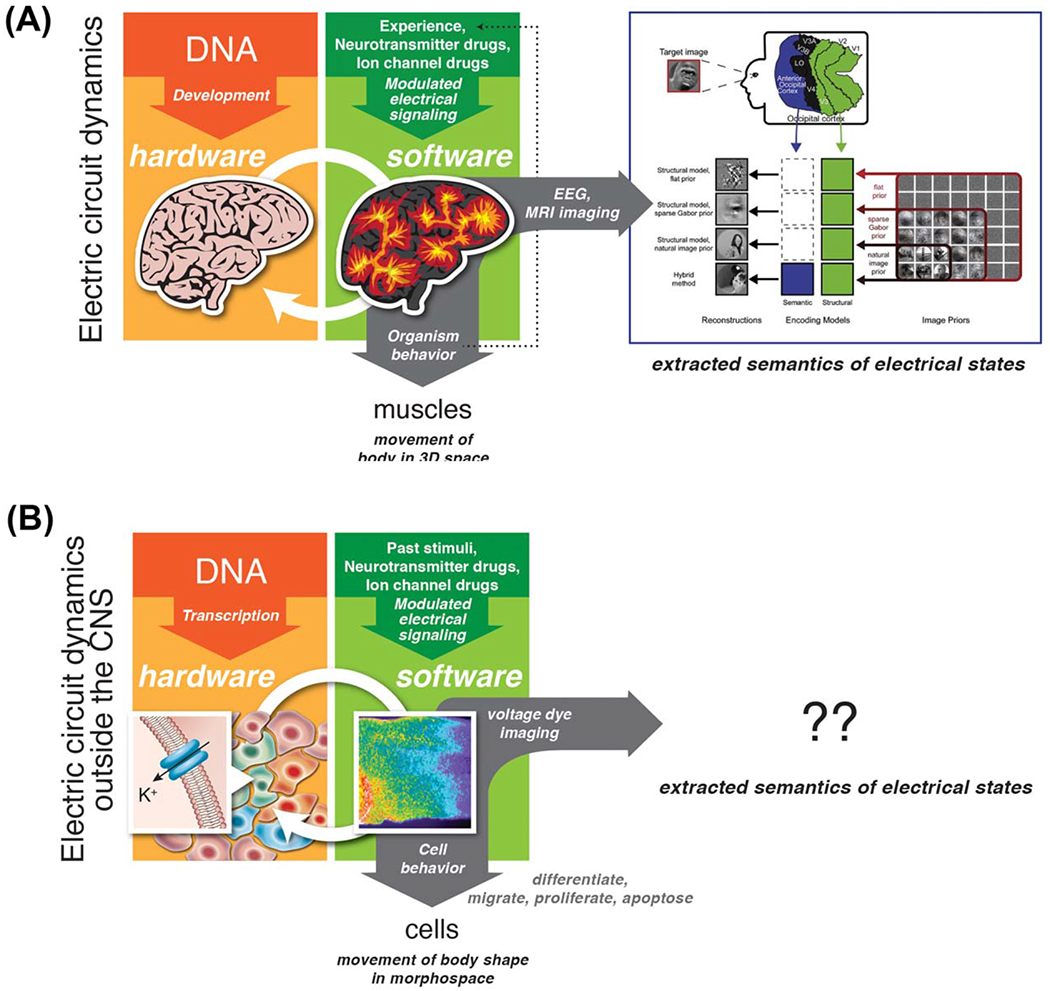Figure 3.

Parallelism between brain and body. (A) In the brain, DNA sets the structure of the central nervous system—the hardware. Electrical circuit dynamics process information and store memories, resulting in experience-dependent (and self-organizing) patterns that control muscles resulting in the movement of the animal in three-dimensional space. Experiences (external sensory stimuli) and reagents targeting GJs, ion channels, and neurotransmitters alter the electric dynamics. Computational pipelines are beginning to be developed and applied to dynamics observed via EEG and MRI imaging, to extract the semantics—the memories represented by these bioelectric states. (B) In somatic tissues of developing or regenerating organisms, DNA sets the complement of connexins, ion channels, and neurotransmitter machinery in all cells—the hardware. Bioelectric dynamics (slow patterns of resting potential within tissues) process information and establish prepatterns for gene expression and morphogenesis, resulting in chemical signal-dependent (and self-organizing) patterns that control cell functions like migration and differentiation, resulting in anatomical changes that move the body through morphospace. Stimuli (chemical and other signals) and reagents targeting GJs, ion channels, and neurotransmitters alter the electric dynamics. Computational pipelines need to be developed and applied to these dynamics as imaged with voltage-sensitive dyes and GJ tracers, to extract the semantics—the instructive anatomical patterns represented by these bioelectric states. Graphics by Jeremy Guay of Peregrine Creative and Alexis Pietak. Neural decoding panel in (A) is reproduced with permission from Naselaris et al., 2009. Voltage pattern panel in (B right) is courtesy of Douglas J. Blackiston.
